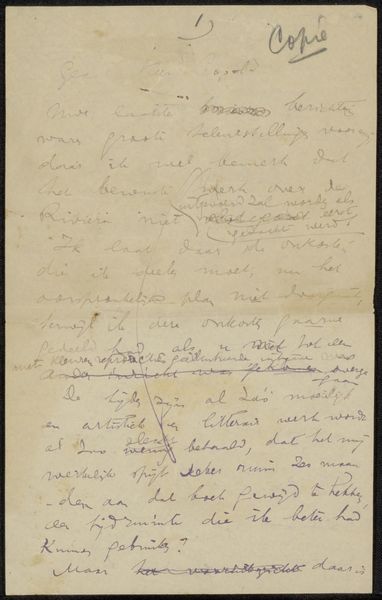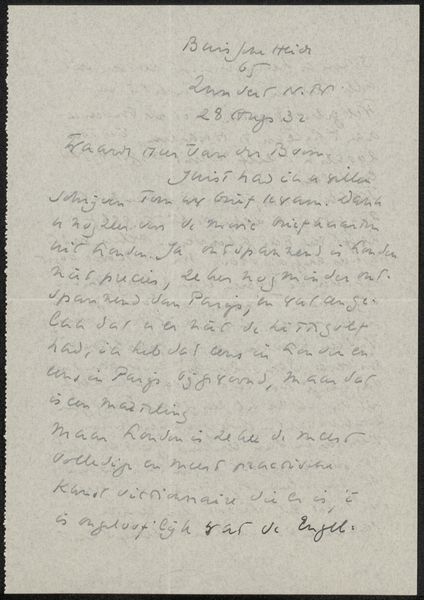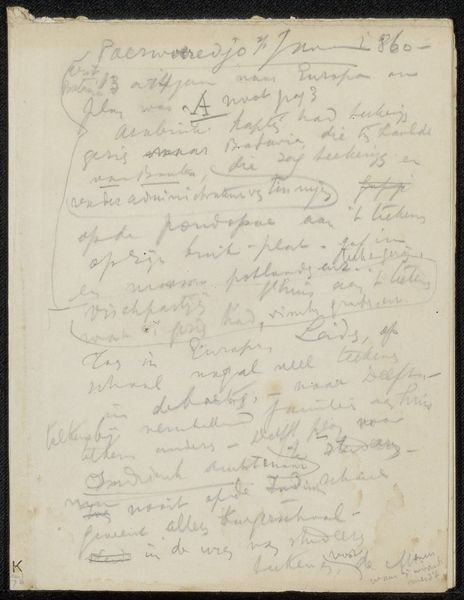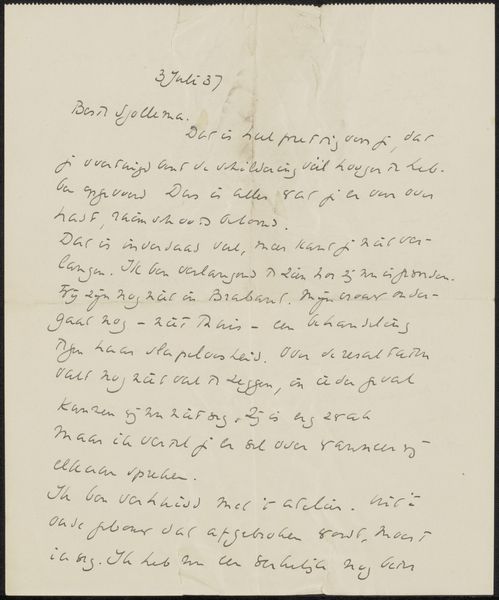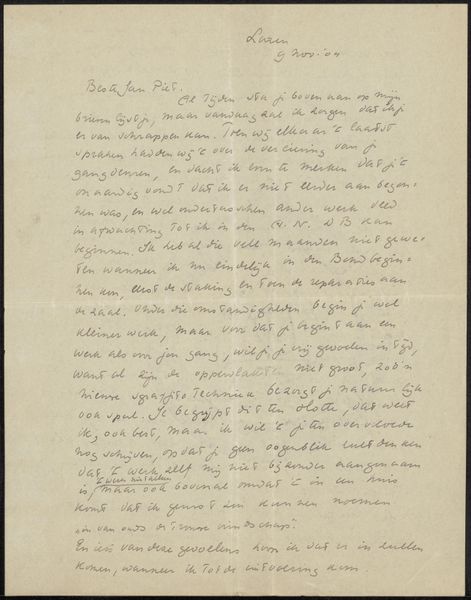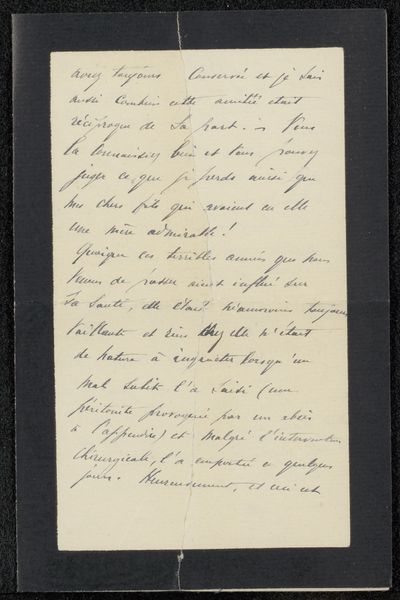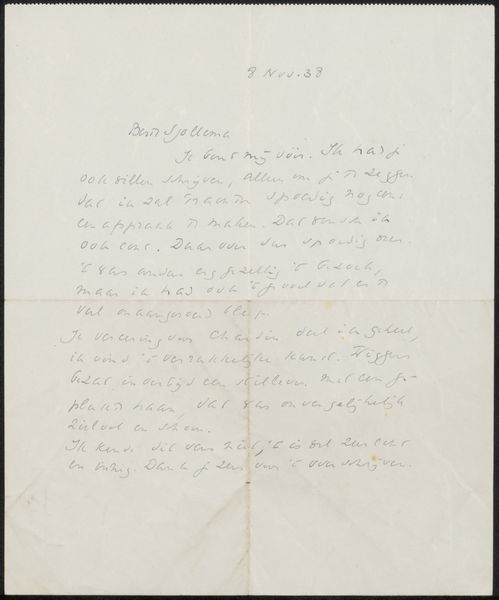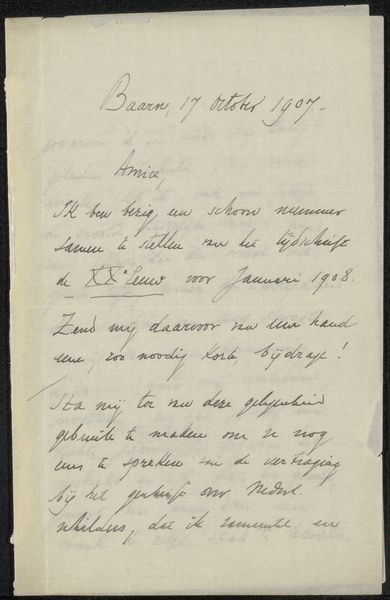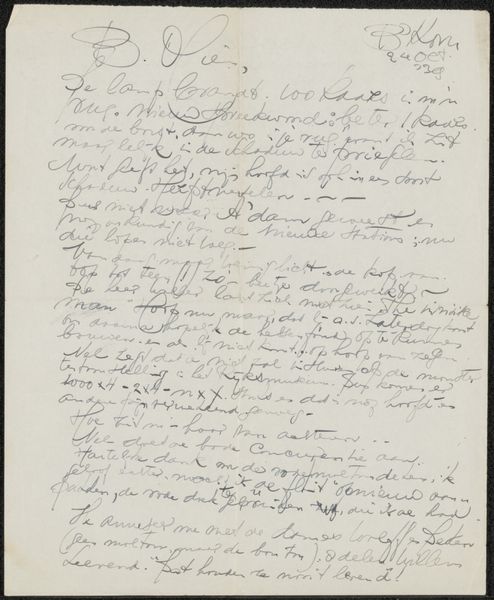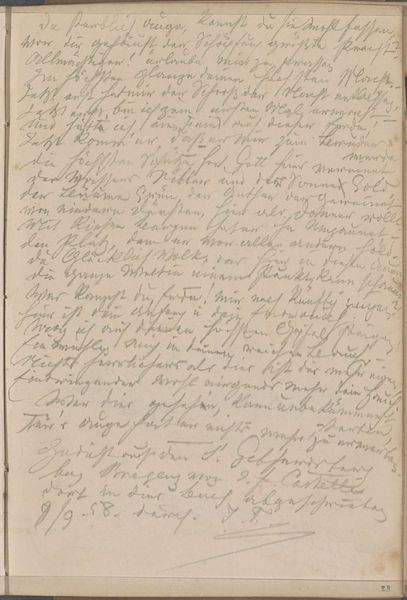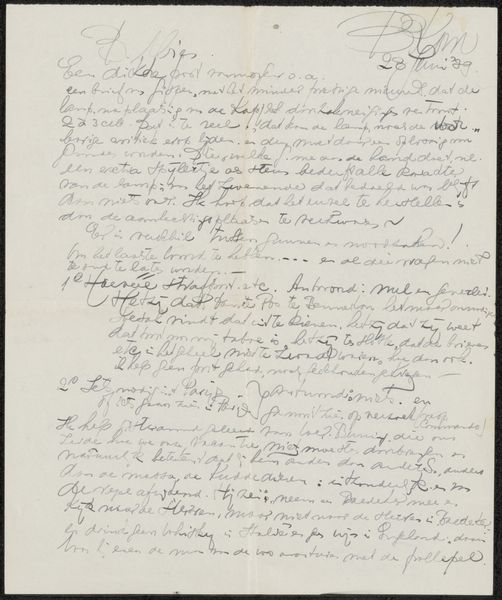
drawing, paper, ink
#
drawing
#
paper
#
ink
#
calligraphy
Copyright: Rijks Museum: Open Domain
Curator: Here we have "Brief aan Philip Zilcken," possibly dating back to 1909. It’s rendered in ink on paper. What are your initial thoughts? Editor: A ghostly missive. The fragile, aged paper—it practically whispers secrets. And the ink, see how it fades in places? You can almost feel the weight of time pressing down on it. Curator: Indeed. Octave Maus, a prominent figure in the Belgian art scene, crafted this letter, and what interests me is how the calligraphic form becomes almost as important as the text itself. Look at the rhythm and the deliberate loops and curves. Editor: I’m more struck by the materiality. Think about the social context. Paper production, ink recipes, the very act of handwriting itself speaks to a specific era and a certain level of education and affluence required to engage in this type of communication. Who was Zilcken, and what relationship did he have with Maus? These tangible objects provide hints to this background. Curator: Philip Zilcken, of course, was a Dutch artist, critic, and art dealer. This letter likely relates to Maus's role in Les XX, the avant-garde group. Note how the writing transcends mere functionality; it is meticulously composed. One could say it's less about the informational content, which seems quite brief and, from what I could determine, talks about obtaining autographs. It is about how each letter participates in a larger design across the entire surface of the work. Editor: For me, the artistry is inextricably tied to the process, to Maus himself, hunched over his desk, carefully choosing each word, the quill scratching against the paper. Each stroke involved conscious labor, transforming ordinary materials into a message with cultural weight. I’d like to better understand what ink was used; this piece opens the possibility to explore the historical techniques. Curator: An intriguing path, definitely. But when considering the form itself, this letter speaks of a conscious aesthetic decision, something deliberately designed. Editor: Ultimately, it reflects a fascinating blend of personal exchange and artistic production. Both form and the tangible elements offer compelling insights, though each suggests different narratives.
Comments
No comments
Be the first to comment and join the conversation on the ultimate creative platform.
